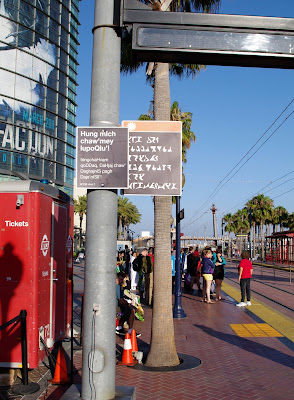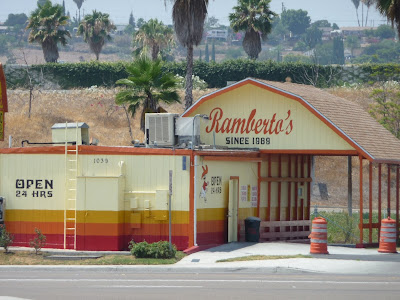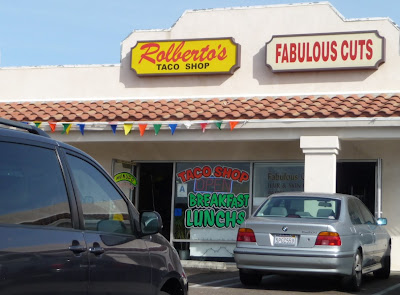No, not The Dude. That’s Kevin Flynn, aka Jeff Bridges, aka this guy:

No, I’m talking about Tron, aka Bruce Boxleitner, aka this guy:

[SPOILERS ahead – be warned!]
I saw the original Tron only very recently for the first time, even though it was a name and property that I’ve known for as long as I can remember. That futuristic name, Tron, conjured images of light-cycles, of course, trailed by glowing colored lines. But I had never had even an abridged viewing of the movie, and when I finally watched it, I remember being shocked at finding out that Tron was a character. I had always thought it signified a place (Tron World) or an idea (computer consciousness?). But what a character he turned out to be!
Despite the title, Tron is not really the story of Tron the character. Tron is told through the perspective of the bumbling sidekick, Kevin Flynn, rather than that of the archetypal hero, Tron. I guess they named the movie Tron because it was the cooler name. I mean, they couldn’t very well have called the movie, Kevin.
Most of the movie had me wondering, “What the hell is this?” Not with an ironic smile, but with an uncomfortable grimace. The electric palette, the unfocused narrative, the way the Recognizer ships looked like pieces of paper floating through a stage from Zaxxon – it honestly made me wonder why this movie gained such a cult following and even mainstream name recognition over the past three decades, when other similarly bad, youth-friendly, video-game-oriented movies from the era, say, Cloak and Dagger or Wargames (both starring Dabney Coleman, by the way, though I only watched the first one . . . many times), languish in obscurity. Was it the signature look? Was it the light cycles? Or was it the fact that Bruce Boxleitner could kick Dabney Coleman’s hindquarters any day of the week, and twice on Sundays, mustache be damned?
To me, the best thing about Tron the property is Tron the character. He’s a brave warrior, a straight shooter with a soft spot for his lady, and a true believer in his cause and the Users. The gravity that Boxleitner brings to the role stands in stark contrast to the corny performances by the rest of the actors and the slapdash feel of the entire production. Tron, who “fights for the Users,” also seems to fight for the dignity of the movie, and very nearly has you believing that the movie walks a fine line between awful and awesome (it doesn’t, falling sadly on the side of the former).
The irony is that this landmark property’s namesake is a relatively uncelebrated actor. Think of any iconic title character, and you’ll usually find a legendary star in the role.
Judah Ben-Hur. Well that’s Charlton Heston, of course.
Citizen Kane. That’s the majestic Orson “Unicron” Welles.
Rocky. Sly Stallone.
Rambo. Ditto.
Tron. . . . Bruce Boxleitner? Who’s Bruce Boxleitner?
If you don’t know Tron, perhaps you know Bruce Boxleitner as the star of Scarecrow and Mrs. King, a mid-80s television series that I never watched, but had at least heard of. To my grade-school, daycare mind, it seemed to inhabit the same grandmotherly china cabinet as Murder, She Wrote and St. Elsewhere (no, I never took those china plates out of the cabinet either). He was a celebrity at just about eye level with Hollywood Squares or, more recently, Dancing with the Stars. Like Morgan Fairchild or Suzanne Pleshette, you’ve probably heard the name, but you wouldn’t know the career.
Having starred in Tron, Scarecrow and Mrs. King, and Babylon 5 (never saw that either), I don’t think anyone could say he hasn’t had a respectable career. But I’m sure it’s been a long time since Mr. Boxleitner’s phone rang with any plum roles. For God’s sake, he starred in 2009’s direct-to-video Transmorphers: Fall of Man. Mercifully, I’ve never seen this “film,” but not only is it of the breed of notoriously cheesy and exploitative mockbusters (of Transformers: Revenge of the Fallen, itself a disgrace of a movie), but it is also the second Transmorphers movie, following a first movie that had zero recognizable names! For Bruce Boxleitner to fall this far, even considering the modest heights of his career, is disheartening, and there should have been no indication that he would have any future in Hollywood’s limelight ever again.
And so it amuses me to imagine how he would have reacted to the call telling him that they were going to revive Tron, and they wanted him back. “Me? Play Tron again? But I don’t know if I’ll still fit in that suit.” Much hay has been made in the media of the CG used to create the younger Jeff Bridges (clearly the much bigger star and centerpiece of both this and the first movie), but I suspect the same tech was used to portray Tron in flashbacks, making Boxleitner look like a young man again. Whatever the technique, I found it much more convincing, and certainly much more touching to see Tron back again, still young, still heroic, but without the hockey helmet, and sporting a stylish haircut.
I’m glad that Tron creator Stephen Lisberger’s unprecedented vision has finally met the technological muscle to make it look as beautiful as it did in his mind. I don’t know how people, both critics and audience members, thought the movie looked good even in 1982, just as I’m not sure why some people today think that the CG “young Kevin Flynn” looks realistic, rather than what it really is, which is a creepy monstrosity.
I’m exceedingly glad that I saw the original Tron before seeing Tron: Legacy, because I don’t think I could have appreciated the sequel nearly as much without being at least somewhat attached to the first film.
And finally, in token of my admiration for Bruce Boxleitner, despite his dozens upon dozens of roles I’ve never seen and never will see, let’s hear it for Tron himself, perhaps the noblest hero in movie-dom.

































